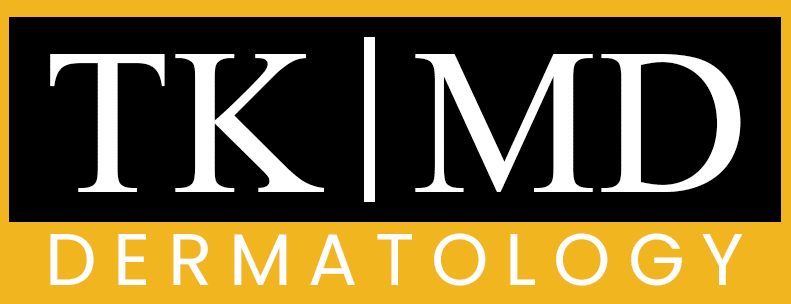In recent years, we have witnessed a surge in the popularity of non-invasive cosmetic procedures, and among them, radiofrequency skin tightening has emerged as a favored option for those seeking to rejuvenate their appearance. This innovative treatment harnesses the power of radiofrequency energy to stimulate collagen production, leading to firmer, tighter skin. As we age, our skin naturally loses elasticity and firmness due to a decrease in collagen and elastin production.
Radiofrequency skin tightening offers a solution that not only addresses these concerns but also promotes a more youthful appearance without the need for surgical intervention. Radiofrequency skin tightening is particularly appealing because it caters to a wide range of skin types and concerns. Whether we are dealing with sagging skin, fine lines, or wrinkles, this treatment can be tailored to meet our specific needs.
By understanding the fundamentals of radiofrequency technology, we can appreciate how it works to enhance our skin’s texture and overall appearance. This treatment has gained traction not only for its effectiveness but also for its minimal downtime, making it an attractive option for those with busy lifestyles.
Key Takeaways
- Radiofrequency skin tightening uses energy to heat the skin and stimulate collagen production
- The benefits of radiofrequency skin tightening include improved skin elasticity and reduction of wrinkles
- Radiofrequency skin tightening is safe for most people and can be used on various areas of the body
- Results of radiofrequency skin tightening can last for several months to a year, depending on individual factors
- When choosing a professional for radiofrequency skin tightening, it’s important to consider their qualifications and experience
How Radiofrequency Skin Tightening Works
How it Works
When we undergo this treatment, radiofrequency energy penetrates the dermis, causing the collagen fibers to contract and stimulating the production of new collagen over time. This process results in tighter, smoother skin as the body naturally repairs itself.
Additional Benefits
The heat generated during the procedure also encourages improved blood circulation, which can further enhance our skin’s overall health and vitality.
The Procedure
The procedure itself is relatively straightforward. A trained professional applies a handheld device to the targeted areas of our skin, delivering radiofrequency energy in a series of pulses. We may feel a warm sensation during the treatment, but it is generally well-tolerated and does not require anesthesia. The duration of each session can vary depending on the size of the treatment area, but most sessions last between 30 minutes to an hour. As we experience this process, we can rest assured that it is designed to be both effective and comfortable.
The Benefits of Radiofrequency Skin Tightening

One of the most significant advantages of radiofrequency skin tightening is its ability to provide noticeable results without the need for invasive surgery. For many of us, the thought of undergoing a surgical procedure can be daunting, and radiofrequency offers a non-invasive alternative that minimizes risks and recovery time. We can enjoy firmer skin and a more youthful appearance without the lengthy downtime associated with traditional facelift surgeries.
Additionally, radiofrequency skin tightening is versatile and can be used on various areas of the body, including the face, neck, abdomen, arms, and thighs. This flexibility allows us to target multiple problem areas in a single treatment plan. Furthermore, the results are gradual and natural-looking, which means we can achieve a refreshed appearance without looking overly “done.” This subtle enhancement is often what we desire as we seek to maintain our natural beauty while addressing signs of aging.
Who Can Benefit from Radiofrequency Skin Tightening
Radiofrequency skin tightening is suitable for a broad spectrum of individuals seeking to improve their skin’s appearance.
Whether we are in our 30s looking to prevent early signs of aging or in our 60s seeking to address more pronounced sagging, this treatment can be customized to meet our unique needs.
It is particularly beneficial for those with mild to moderate skin laxity who wish to enhance their skin’s firmness without resorting to surgical options.
Moreover, individuals with various skin types can safely undergo radiofrequency treatments. Unlike some laser treatments that may not be suitable for darker skin tones due to the risk of hyperpigmentation, radiofrequency is generally safe for all skin types. This inclusivity makes it an appealing choice for many of us who may have previously felt limited by other cosmetic options.
Ultimately, anyone looking to rejuvenate their appearance and boost their confidence can consider radiofrequency skin tightening as a viable solution.
The Difference Between Radiofrequency Skin Tightening and Other Skin Tightening Methods
When exploring options for skin tightening, we may come across various methods, including ultrasound therapy, laser treatments, and surgical facelifts. While each approach has its merits, radiofrequency skin tightening stands out due to its unique mechanism and benefits. Unlike laser treatments that primarily target pigmentation or surface issues, radiofrequency focuses on stimulating collagen production in the deeper layers of the skin.
Additionally, radiofrequency treatments tend to have fewer side effects compared to surgical options. While facelifts can provide dramatic results, they also come with risks such as scarring and prolonged recovery times. In contrast, radiofrequency offers a non-invasive alternative that allows us to return to our daily activities almost immediately after treatment.
This convenience is particularly appealing for those of us who lead busy lives and cannot afford extended downtime.
The Safety of Radiofrequency Skin Tightening

Safety is always a primary concern when considering any cosmetic procedure, and radiofrequency skin tightening is no exception. Fortunately, this treatment has been extensively studied and is considered safe when performed by qualified professionals. The technology has been used for years in various medical applications, including dermatology and aesthetics, which adds to its credibility.
Before undergoing treatment, it is essential for us to consult with a licensed practitioner who can assess our individual needs and determine if we are suitable candidates for radiofrequency skin tightening. During this consultation, we should discuss any medical conditions or medications that may affect our treatment outcomes. By taking these precautions and ensuring that we are in capable hands, we can enjoy the benefits of this innovative procedure with peace of mind.
What to Expect During a Radiofrequency Skin Tightening Treatment
As we prepare for our radiofrequency skin tightening session, it is helpful to know what to expect during the procedure itself. Upon arrival at the clinic or spa, we will typically undergo a brief consultation where our practitioner will review our goals and assess our skin condition. Once we are ready for treatment, they will cleanse the targeted area and apply a conductive gel to enhance the delivery of radiofrequency energy.
During the treatment, we will feel a warm sensation as the device glides over our skin. Most people describe this feeling as comfortable rather than painful. The duration of the session will depend on the size of the area being treated; however, most sessions last between 30 minutes to an hour.
Afterward, we may notice some immediate tightening effects due to collagen contraction, but the most significant results will develop over time as new collagen forms.
How Long Do the Results of Radiofrequency Skin Tightening Last
One of the most appealing aspects of radiofrequency skin tightening is its long-lasting results. While individual experiences may vary based on factors such as age, skin condition, and lifestyle choices, many of us can expect to see improvements that last anywhere from six months to two years following treatment. The gradual nature of collagen production means that results will continue to improve over time as our body naturally regenerates.
To maintain optimal results, some practitioners recommend follow-up treatments every six months to a year. This maintenance schedule allows us to sustain our youthful appearance while continuing to stimulate collagen production. By incorporating these sessions into our skincare routine, we can enjoy firmer skin for an extended period without resorting to more invasive procedures.
Potential Side Effects of Radiofrequency Skin Tightening
While radiofrequency skin tightening is generally safe and well-tolerated, it is essential for us to be aware of potential side effects that may occur after treatment. Commonly reported side effects include mild redness or swelling in the treated area, which typically subsides within a few hours post-treatment. Some individuals may also experience slight tenderness or warmth in the area for a short period.
Serious side effects are rare but can include burns or changes in pigmentation if the procedure is not performed correctly or if we have certain underlying conditions. To minimize these risks, it is crucial for us to choose a qualified professional with experience in administering radiofrequency treatments. By doing so, we can ensure that we receive safe and effective care tailored to our individual needs.
Choosing a Qualified Professional for Radiofrequency Skin Tightening
Selecting the right practitioner for our radiofrequency skin tightening treatment is paramount to achieving optimal results safely. We should seek out licensed professionals with extensive training in aesthetic procedures and a solid understanding of skin anatomy. Checking credentials and reading reviews from previous clients can provide valuable insights into their expertise and patient satisfaction.
During our initial consultation, we should feel comfortable asking questions about their experience with radiofrequency treatments and their approach to patient care. A reputable practitioner will take the time to assess our individual needs and develop a personalized treatment plan that aligns with our goals. By prioritizing qualifications and experience when choosing a provider, we can enhance our chances of enjoying successful outcomes from our radiofrequency skin tightening journey.
The Cost of Radiofrequency Skin Tightening and How to Budget for It
As with any cosmetic procedure, understanding the cost associated with radiofrequency skin tightening is essential for effective budgeting. The price can vary significantly based on factors such as geographic location, practitioner expertise, and the size of the treatment area. On average, we might expect to pay anywhere from $200 to $800 per session.
To budget effectively for this treatment, it is wise for us to consider how many sessions we may need based on our desired results and maintenance schedule. Many clinics offer package deals that can reduce costs per session when multiple treatments are purchased upfront. Additionally, some practitioners may provide financing options or payment plans that allow us to spread out costs over time.
In conclusion, radiofrequency skin tightening presents an exciting opportunity for those seeking non-invasive solutions for sagging skin and signs of aging. By understanding how this innovative treatment works and what benefits it offers, we can make informed decisions about enhancing our appearance while prioritizing safety and effectiveness. With proper research and guidance from qualified professionals, we can embark on this journey toward rejuvenation with confidence.
If you are interested in learning more about skin treatments, you may also want to check out this article on underarm laser treatment. This article discusses an effective hair removal solution that can help you achieve smooth and hair-free underarms. It provides valuable information on the benefits of laser treatment and how it can be a game-changer in your beauty routine.
FAQs
What is radiofrequency skin tightening?
Radiofrequency skin tightening is a non-invasive cosmetic procedure that uses radiofrequency energy to heat the skin and stimulate collagen production, resulting in tighter, firmer skin.
How does radiofrequency skin tightening work?
During a radiofrequency skin tightening treatment, a device delivers radiofrequency energy into the deeper layers of the skin, causing the tissues to heat up. This heat stimulates the production of new collagen and elastin, which helps to tighten and firm the skin over time.
What areas of the body can be treated with radiofrequency skin tightening?
Radiofrequency skin tightening can be used to treat various areas of the body, including the face, neck, arms, abdomen, thighs, and buttocks.
Is radiofrequency skin tightening safe?
Radiofrequency skin tightening is considered a safe and effective treatment for skin tightening. However, it is important to consult with a qualified and experienced practitioner to ensure the procedure is performed safely.
What are the benefits of radiofrequency skin tightening?
The benefits of radiofrequency skin tightening include improved skin elasticity, reduction of fine lines and wrinkles, and overall skin tightening and firming. It is a non-invasive alternative to surgical procedures for skin tightening.
How many treatments are needed for radiofrequency skin tightening?
The number of treatments needed for radiofrequency skin tightening can vary depending on the individual’s skin condition and treatment goals. Typically, a series of treatments spaced several weeks apart is recommended for optimal results.


